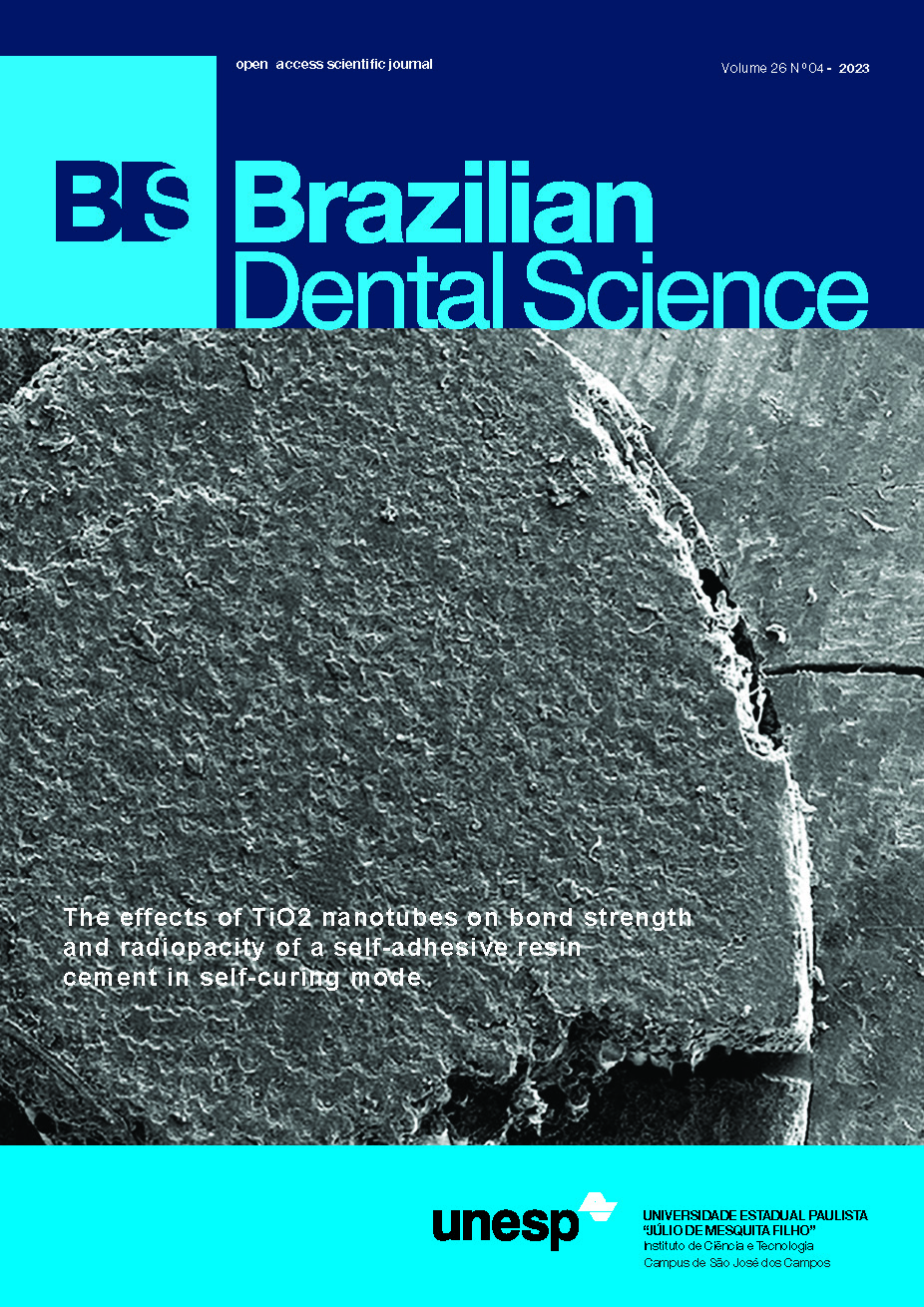Potential effect of platelet rich fibrin prepared under different centrifugation protocols on stem cells from the apical papilla
DOI:
https://doi.org/10.4322/bds.2023.e3847Resumo
Objectives: The present work was designed to evaluate the proliferation and differentiation potential of stem cells from the apical papilla (SCAP) seeded along with platelet rich fibrin (PRF) scaffolds prepared under two different centrifugation protocols. Materials and Methods: Standard and advanced PRF protocols were used. Cells were divided into 4 groups: negative control, positive control, standard (L-PRF) and advanced (A-PRF) groups. Cell count and cell viability assays were carried out to assess the proliferation capacity. Alizarin red S (ARS) stain, Alkaline phosphatase (ALP) activity and Receptor activator of nuclear factor-kappa B ligand (RANKL) immunofluorescence staining were used to evaluate the osteogenic potential in the differentiated cells. Results: Both types of platelet rich fibrin increased the cell count, cell viability with no cytotoxicity that was reflected on increased proliferation and differentiation in terms of the performed tests. Conclusion: A-PRF group showed significant increase in proliferation and differentiation potentials compared to L-PRF group.
KEYWORDS
Alkaline phosphatase; Centrifugation; Platelet rich fibrin; RANKL ligand; Stem cells.
Downloads
Downloads
Publicado
Como Citar
Edição
Seção
Licença
TRANSFERÊNCIA DE DIREITOS AUTORAIS E DECLARAÇÃO DE RESPONSABILIDADE
Toda a propriedade de direitos autorais do artigo "____________________________________________________________________" é transferido do autor(es) para a CIÊNCIA ODONTOLÓGICA BRASILEIRA, no caso do trabalho ser publicado. O artigo não foi publicado em outro lugar e não foi submetido simultaneamente para publicação em outra revista.
Vimos por meio deste, atestar que trabalho é original e não apresenta dados manipulados, fraude ou plágio. Fizemos contribuição científica significativa para o estudo e estamos cientes dos dados apresentados e de acordo com a versão final do artigo. Assumimos total responsabilidade pelos aspectos éticos do estudo.
Este texto deve ser impresso e assinado por todos os autores. A versão digitalizada deverá ser apresentada como arquivo suplementar durante o processo de submissão.




























